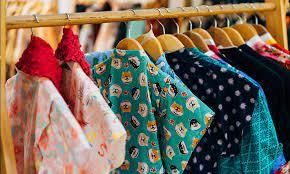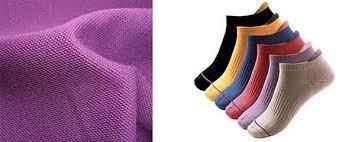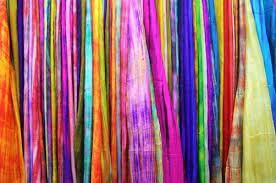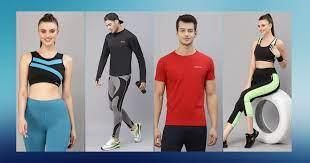Clothes – Our Protection - 2 Class 6 Worksheet Science
Q1: Fill in the Blanks.
(i) Clothes made from ____________ fibres have air spaces between them, making them comfortable, especially in hot weather.
Ans: natural
Clothes made from natural fibres like cotton, jute, and linen have air spaces between them, providing comfort, especially in hot weather.
(ii) ____________ is the first synthetic material to be made by humans.
Ans: Nylon
Nylon was the first synthetic material made by humans.
(iii) In hot weather, ____________ clothes are best as they allow body heat to escape and absorb sweat.
Ans: light cotton
In hot weather, light cotton clothes are best as they allow body heat to escape, absorb sweat, and allow air circulation, providing comfort.
(iv) Dri-Fit material, made from ____________, is used for sportswear as it keeps athletes dry and comfortable.
Ans: polyester
Dri-Fit material used for sportswear is made from polyester, which helps in taking sweat away from the skin and evaporating it quickly, keeping athletes dry and comfortable during workouts, especially in hot weather.
(v) Socks should ideally be made of ____________ material.
Ans: cotton
Cotton is an ideal material for making socks as it is comfortable, absorbs sweat, and helps in keeping the feet dry.
Q2: Match the Column.
 Ans:
Ans:
Q3: True or False.
(i) Natural fibres are obtained from plants and animals.
Ans: True
Natural fibres are obtained from plants and animals, such as cotton, jute, and silk.
(ii) Synthetic fibres are man-made and have more air spaces than natural fibres.
Ans: False
Synthetic fibres have less air spaces than natural fibres, making them less comfortable in hot weather as they do not absorb sweat.
(iii) Dri-Fit material is preferred over cotton for sportswear because it absorbs sweat quickly.
Ans: True
Dri-Fit material is preferred over cotton for sportswear because it quickly absorbs sweat and keeps the body dry and comfortable during workouts.
(iv) Rubber boots are worn in hot weather to protect feet from dust and germs.
Ans: False
Rubber boots are worn in the rainy season to protect feet from water and rain, not in hot weather.
(v) Moth balls are used to keep insects away from stored clothes.
Ans: True
Moth balls or dried neem leaves are used to keep insects away from stored clothes.
Q4: Choose the Odd One Out.
(i) (a) Cotton
(b) Jute
(c) Polyester
(d) Linen
Ans: Polyester
Polyester is a synthetic fibre, while the other three options are natural fibres.
(ii) (a) Winter
(b) Rainy
(c) Summer
(d) Spring
Ans: Spring
Winter, Rainy, and Summer are seasons, while Spring is a season and does not belong to the category of weather conditions.
(iii) (a) Wool
(b) Silk
(c) Leather
(d) Rayon
Ans: Leather
Wool, Silk, and Rayon are all types of fibres, while Leather is not made from fibres; it is made from animal skins.
(iv) (a) Raincoat
(b) Umbrella
(c) Jacket
(d) Sandals
Ans: Sandals
Raincoat, Umbrella, and Jacket are all items used to protect against rain and cold weather, while Sandals are footwear.
(v) (a) Nylon
(b) Dri-Fit
(c) Rayon
(d) Cotton
Ans: Cotton
Nylon, Dri-Fit, and Rayon are all synthetic fibres, while Cotton is a natural fibre.
Q5: Short Answers Questions.
(i) Name two natural fibres used to make clothes.
Ans: Cotton and Jute are examples of natural fibres used to make clothes.
(ii) Why are clothes made from natural fibres comfortable in hot weather?
Ans: Clothes made from natural fibres have air spaces between them, allowing for better air circulation and sweat absorption, making them comfortable to wear in hot weather.
(iii) Why is Dri-Fit material preferred for sportswear?
Ans: Dri-Fit material is preferred for sportswear because it quickly wicks away sweat from the skin to the fabric surface, where it evaporates rapidly, keeping athletes dry and comfortable, especially in hot weather.
(iv) How should clothes worn by sick people be taken care of?
Ans: Clothes worn by sick people should be disinfected with an antiseptic solution to prevent the growth of disease-causing germs and to ensure hygiene.
(v) Why should synthetic fibres be avoided while working in the kitchen?
Ans: Synthetic fibres should be avoided while working in the kitchen as they are highly flammable and can catch fire easily, posing a safety risk.
|
49 videos|156 docs|34 tests
|
FAQs on Clothes – Our Protection - 2 Class 6 Worksheet Science
| 1. What are the different functions of clothes? |  |
| 2. How do clothes protect us from the cold? |  |
| 3. Can clothes protect us from the sun? |  |
| 4. Why is it important to wear appropriate clothes for certain activities? |  |
| 5. How can clothes help in expressing personal style and identity? |  |
















